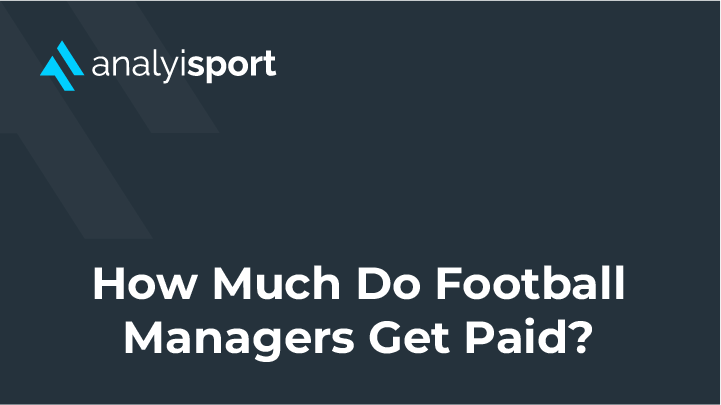How Much Do Footballers Get Paid?
How Much Do Footballers Get Paid?
In 1901, the average weekly wage for a professional footballer was restricted to a maximum of £4 after the Football League felt their salaries were escalating too quickly.
However, a significant turning point came in 1961, thanks to Jimmy Hill, the captain of Fulham at the time. Hill led a campaign to abolish the maximum wage, arguing that players should earn a fair wage based on their talent and market value.
Hill went on to become a TV Presenter, working on the BBC Football programme Match of the Day. He also worked on the BBC coverage at several World Cups and European Championships.
His efforts resulted in the removal of the wage cap, allowing clubs to offer players much higher salaries.
This landmark change paved the way for the dramatic rise in player wages that we see today.
In 1961, Johnny Haynes, the England captain, became the first-ever £100-a-week player. At the time, it was a jaw-dropping development in the world of football.
Haynes’s wages are incomparable to the wage packets of today’s footballing stars. Leading footballers currently receive salaries of around £400,000 a week (December 2024). To put that into context, it’s 550 times more than the average British worker’s weekly salary—roughly the same as 11 years of salary from a typical 9-5 job.
Do all footballers receive incredible salaries, or is it more complex than that?
Where do endorsements fit into a footballer’s earnings? Is it just the world-renowned Premier League stars that find themselves with booming bank accounts?
In this insight, we’ll look at some of these questions and explain how much modern-day footballers get paid, along with the factors that contribute to their wealth.
Football salaries have been affected by a number of factors over the years including the work done by Jimmy Hill, the introduction of Sky Sports and The Bosman Ruling.
The Bosman Ruling and Its Impact on Player Salaries
The Bosman Ruling, which came into effect in 1995, had an impact on footballers’ wages and the transfer market. It changed football transfers and football salaries.
Before the Bosman Ruling, players who were out of contract were still required to pay a transfer fee to their current club if they moved to another team.
Jean-Marc Bosman, a Belgian footballer, challenged this system, and the European Court of Justice ruled that players out of contract should be free to move without the need for a transfer fee, and that foreign players within the EU should be treated equally to domestic players.
The impact on player salaries was immediate and significant:
- Increased Mobility: Out-of-contract players could move freely between clubs, boosting their bargaining power and allowing them to secure higher salaries.
- Higher Salaries for Top Players: Without transfer fees, clubs shifted their funds to player wages, leading to significant salary increases for top players.
- Increased Competition: With more freedom to move, clubs competed fiercely for talent, driving up wages as they vied for star players.
- Rise of Player Agents: The ruling also saw the rise of player agents, who helped negotiate higher wages, further inflating salary figures for top players.
The Bosman Ruling was part of the modern football financial era, sparking a huge rise in player salaries, especially in top leagues like the Premier League, La Liga, and Serie A, and paving the way for football’s commercial growth.
Overview of Footballers’ Salaries
Top-tier footballers demand,and often receive,multi-million-pound contracts, reflecting their immense value both on and off the pitch.
Players like Messi, Kane, Mbappé, and Haaland are among the highest earners, attracting large crowds wherever they play but also legions of travelling supporters. Clubs are now making overseas tours an integral part of pre-season as they become a key revenue stream.
The player’s presence guarantees lucrative TV deals and a steady stream of merchandise sales, making them vital assets to their clubs.
These players have immense value to their clubs, with sponsors attracted by their commercial potential. Commercial and image rights have become a regular feature in player contracts.
The upward trajectory in player wages can be traced back to 1961 when wage restrictions were lifted, allowing clubs to begin offering larger salaries to secure match-winners. It should also not be forgotten that these players are signed for their skills and abilities to transfer teams. These are the players who can win titles and trophies.
Since the turn of the millennium, salaries have risen dramatically, with some estimates suggesting a staggering 1,500% increase compared to 2000. It’s now not unusual for players to take home seven-figure sums monthly.
Factors Influencing Salaries
Contracts are negotiated alongside players’ agents, and these contracts can be extremely complex.
The new salaries reflect the worldwide appeal of the game. Attracting the best players can lead to improved on field performance and, crucially, increased marketability. But this isn’t always the case. There are cases where new players aren’t a success and are sold at a loss, so transfer fees and transfer wages are carefully structured.
Popular or controversial players provoke strong reactions from fans and can lead to increased revenue from merchandise, commercial contracts, and new media deals.
Historically, players in certain positions has affected how much footabllers get paid and how some get paid more than others. Strikers, for instance, have typically earned more than midfielders or defenders.
While player shirt numbers no longer indicate the highest-paid positions, goal scorers continue to command premium wages.
Goal scorers make the crowd roar and create unforgettable moments for fans. These players often garner large followings, sell more shirts, and bring celebrity status both on and off the field, making them more likely to be more financially rewarded.
Established players with a proven track record and a collection of medals have the leverage to command higher wages.
Their experience brings stability, helping to unify the team and provide essential balance—qualities that are vital for success. Clubs justify paying a premium for these players, hoping their expertise will ensure continued success.
Salaries can also vary from country to country, but marquee signings like Ronaldo or Messi have proven that reputation transcends geographical boundaries. Today, player salaries are no longer solely about on-pitch performance. Players also play a crucial role in promoting clubs and boosting the profile of emerging leagues, attracting global attention and sponsorship deals that go far beyond matchday revenue.
The Rise of Sky Sports and Its Impact on Football Salaries
The rise of Sky Sports in the 1990s revolutionised football’s financial landscape, not in the UK but worldwide.
As television rights deals increased, especially with the Premier League’s landmark £304 million deal with Sky in 1992, clubs began receiving unprecedented revenue. Much of the revenue was used for player salaries.
This influx of money allowed clubs to offer significantly higher wages to attract and retain top talent, leading to a dramatic increase in player salaries.
The commercialisation of football, driven by TV deals, paved the way for the multi-million-pound contracts that are now commonplace in the sport.
The Premier League now has a number of television rights deals for the UK and overseas, providing increased revenue for clubs. The deal sees the Premier League broadcasting across the world and across multiple platforms in the UK. In addition the English Football League has signed increased revenue deals for its leagues.
Across Europe and Worldwide leagues seek to sign media contracts that increase revenue for clubs and the leagues, that increases revenue for clubs, partners and players with fans now able to watch live football around the world.
The increased TV and Media rights has seen increased football salaries not only in the UK, but across the world, with players benefiting from not only the Bosman ruling but the increased revenue coming into football from media and commercial deals.
Comparison Across Major Leagues
It’s clear that average salaries vary worldwide. While the Premier League continues to generate more revenue than other European leagues, it’s not top of the league for player wages. At the moment the Saudi Pro-League is offering the highest salaries in football.
The Saudi Pro-League’s average annual wage bill sits in first place with an average of £4.95 million a year. Players who earn well beyond this level include Cristiano Ronaldo, Neymar, and Karim Benzema, with wages of £170 million and £85 million, respectively.
Taking second place with an average of £3.24 million a year are players in the UK’s Premier League. Mohamed Salah, Erling Haaland, and Casemiro rank among the highest earners in this league, each with earnings in excess of £18 million annually.
La Liga players rank third in terms of the highest salaries. With an average wage that is more than one million pounds less than the Premier League, and nearly three million pounds less than the Pro-League elite, players like Luka Modric and Robert Lewandowski still earn substantial sums in excess of £18 million.
While each league boasts a generous average annual wage, it’s clear that some players earn more than 10 times the average. The different leagues around the world know offer bonus schemes, media rights, performance rights and this is all affecting how much footballers get paid.
Notably, these high-earning players are often revered goal scorers with large, loyal fanbases. These fans are eager to buy shirts and merchandise, regardless of which club they move to.
Endorsements and Bonuses
In addition to their club contracts, top players land lucrative sponsorship deals, creating additional income streams. In 2003, David Beckham secured an impressive $160 million in a brand deal with Adidas. The year following his retirement, he earned $75 million more from brand deals alone.
Players are now continuing to earn money from sponsorships and commercial deals long after they have stopped playing.
Player contracts often contain clauses for sponsorships and endorsements, which are strategic partnerships between the player, the club, and various brands.
High-profile players attract sponsorship deals with major brands willing to pay large sums to have their image associated with these stars.
These partnerships benefit the player, the brand, and the club, creating a mutually beneficial financial arrangement.
Financial Management
Many players are financially astute and seek to prolong their wealth through investment. While stars like Messi, Ronaldo, and Haaland have earned enough to live for multiple lifetimes, not all players are so fortunate.
It is reportsed that an estimated 40% of players go bankrupt within five years of retirement from the game, highlighting the importance of planning for the future. Many players invest a percentage of their wages to secure their financial future.
For instance, retired player Michael Owen invested heavily in the world of horse racing. His second career in the turf has been more profitable than his first, and he is now estimated to have a net worth of over £30 million.
The answer to “How much do footballers get paid?” is not straightforward. Salaries vary widely, not just between teams in the same league, but also from player to player within a team. With some players in the Premier League being paid in excess of £400,000 per week, players in the National League are paid an average of between £1,000 and £1,500 a week.
Football wages vary massively from country and across the leagues with the salary depending on the club, league, country, player and the salary that the player has been able to negotiate.
Q&A
How much are UK footballers paid?
Top UK footballers can earn around £400,000 per week in salaries. For context, that’s 550 times more than the average weekly salary in the UK.
Who is the most paid footballer?
Cristiano Ronaldo is currently the most paid footballer, reportedly earning over £3.4 million per week at Al Nasser.
Who is the No. 1 richest footballer in the world?
As of now, Cristiano Ronaldo holds the title of the richest footballer globally, with his substantial earnings from both his salary and endorsements.
Who is the richest UK footballer?
David Beckham is widely considered the richest UK footballer, with an estimated net worth in excess of $450 million, boosted by his endorsements and investments.
Related Courses:

- Level 1
- Module
Level 1: Opposition Analysis in Football
£25.00
Share this article
Our Learning Pathways
AnalyiSport is for everyone who is passionate about analysis in football. Where are you in your development journey?
Become a Football Scout
As more clubs than ever look to build data into their recruitment process, an understanding of recruitment analysis is your ticket to success in the game.
Related Articles
Our team provides news and insights from the cutting edge of football analysis.






